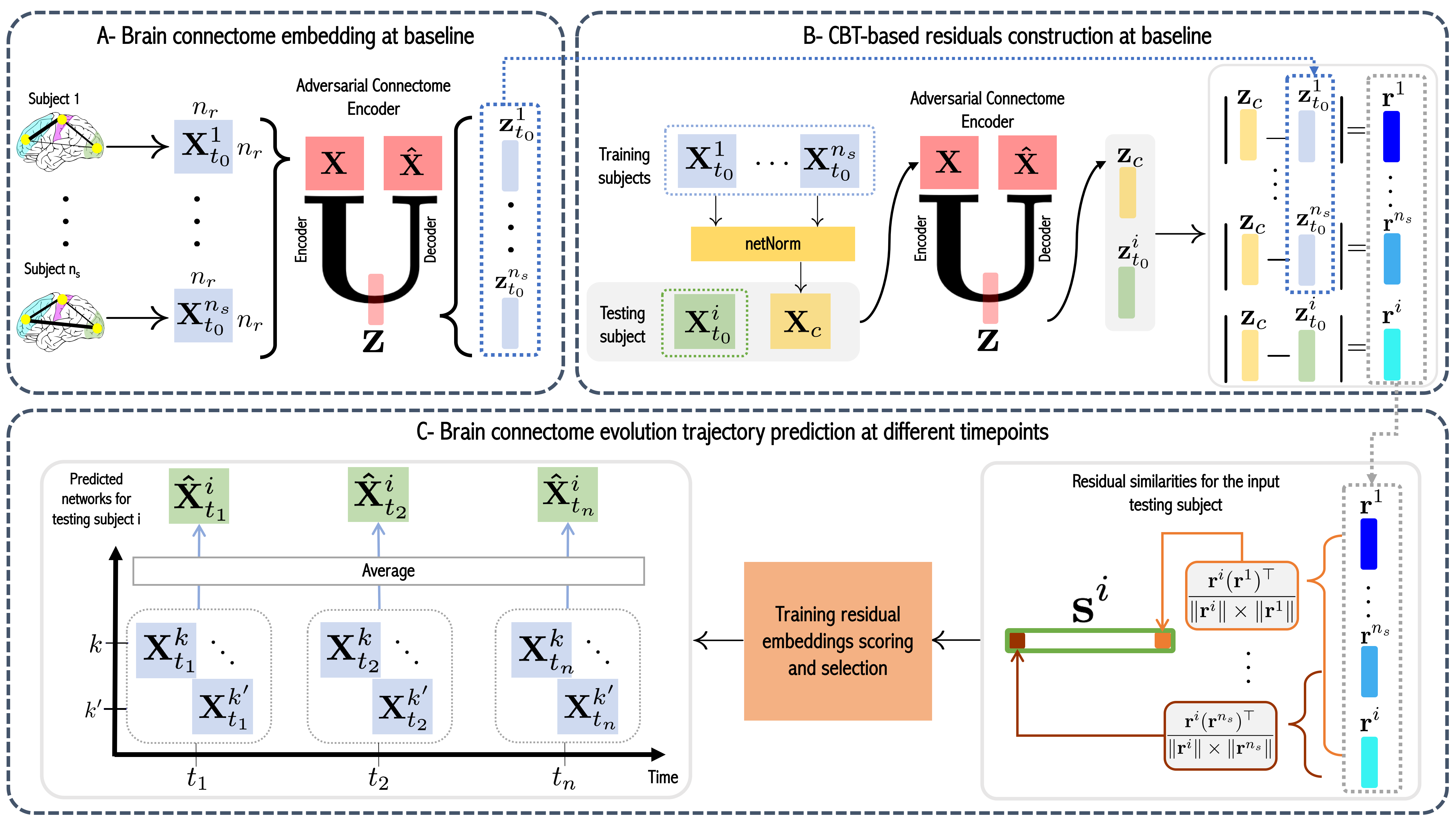Residual Embedding Similarity-Based Network Selection for Predicting Brain Network Evolution Trajectory from a Single Observation
While existing predictive frameworks are able to handle Euclidean structured data (i.e, brain images), they might fail to generalize to geometric non-Euclidean data such as brain networks. Besides, these are rooted the sample selection step in using Euclidean or learned similarity measure between vectorized training and testing brain networks. Such sample connectomic representation might include irrelevant and redundant features that could mislead the training sample selection step. Undoubtedly, this fails to exploit and preserve the topology of the brain connectome. To overcome this major drawback, we propose Residual Embedding Similarity-Based Network selection (RESNets) for predicting brain network evolution trajectory from a single timepoint. RESNets first learns a compact geometric embedding of each training and testing sample using adversarial connectome embedding network. This nicely reduces the high-dimensionality of brain networks while preserving their topological properties via graph convolutional networks. Next, to compute the similarity between subjects, we introduce the concept of a connectional brain template (CBT), a fixed network reference, where we further represent each training and testing network as a deviation from the reference CBT in the embedding space. As such, we select the most similar training subjects to the testing subject at baseline by comparing their learned residual embeddings with respect to the pre-defined CBT. Once the best training samples are selected at baseline, we simply average their corresponding brain networks at follow-up timepoints to predict the evolution trajectory of the testing network. Our experiments on both healthy and disordered brain networks demonstrate the success of our proposed method in comparison to RESNets ablated versions and traditional approaches.
PDF Abstract